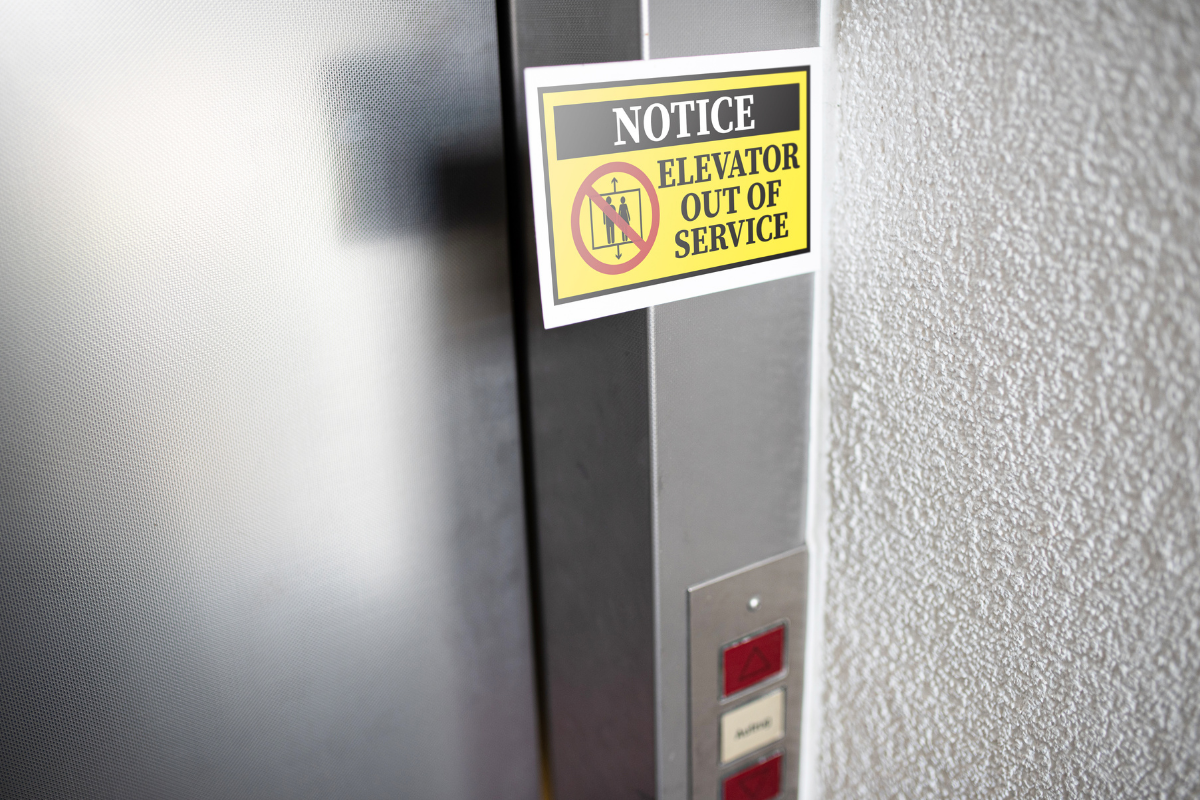Misty Lab
How to Brew the Perfect Cup of Coffee

Introduction:
There’s something magical about that first sip of coffee in the morning, a moment of warmth, clarity, or even nostalgia. But brewing the perfect cup at home can feel daunting with so many methods, tools, and opinions out there. From the clean, bright notes of a pour-over to the bold, full-bodied richness of a French press, the “perfect” cup is deeply personal. This guide breaks down the most popular brewing methods, shares expert tips, and draws on real-world insights from coffee enthusiasts to help you craft a cup that rivals your favorite café. Whether you’re a beginner or a seasoned home barista, you’ll find practical advice to elevate your coffee game.
Understanding Coffee Brewing Methods
The method you choose shapes the flavor, texture, and overall experience of your coffee. Below, we explore four popular methods: pour-over, French press, AeroPress, and automatic drip based on their ease, flavor profile, and unique quirks. Each method has its fans and critics, but as Areli Barrera de Grodski from Little Waves Coffee Roasters says, “The perfect cup of coffee is the one you enjoy” (Bon Appétit).
Pour-Over: Clean and Precise
What It Is: Pour-over involves pouring hot water over coffee grounds in a paper or metal filter, letting it drip into a carafe or mug. It’s a hands-on method that rewards precision.
Pros:
- Clean, bright flavor with no sediment.
- Full control over water flow and brewing time.
- Easy cleanup with disposable or reusable filters.
Cons:
- Takes 3-4 minutes, requiring patience.
- Needs practice to master pouring technique.
How to Brew:
- Grind 32g of coffee to a medium-fine consistency (like table salt).
- Place a filter in your dripper (e.g., Chemex or Kalita Wave) and rinse it with hot water to remove paper taste.
- Add coffee grounds to the filter.
- Pour 60-70g of 200°F water in a slow, circular motion to bloom the coffee for 45 seconds.
- Gradually pour 500g of water total, aiming for a 3.5-4-minute brew time.
Tips:
- Use a gooseneck kettle for precise pouring.
- Experiment with pour speed to adjust flavor slower for stronger, faster for lighter.
- Try different filters (paper for cleaner taste, metal for more body).
Real-World Insight: On Reddit’s r/Coffee, a user shared their journey to a perfect pour-over, emphasizing the importance of tracking variables like grind size and water temperature to achieve a “smooth, rich” cup with “chocolate and cherry notes” (Reddit).
French Press: Bold and Full-Bodied
What It Is: Also called a cafetière, the French press steeps coarsely ground coffee in hot water before pressing it through a mesh filter, retaining natural oils for a robust flavor.
Pros:
- Rich, full-bodied taste with deep flavor.
- Simple to use, requiring minimal equipment.
- Great for brewing multiple cups at once.
Cons:
- Can leave sediment if not pressed carefully.
- Harder to control extraction consistency.
- Cleanup can be messy.
How to Brew:
- Grind 35g of coffee coarsely (like coarse sea salt).
- Add coffee to the French press.
- Pour 250g of 205°F water, stir gently, and let sit for 2 minutes.
- Add another 250g of water, stir, and steep for 2 more minutes.
- Slowly press the plunger down to separate grounds.
Tips:
- Use a timer to avoid over-steeping, which can make coffee bitter.
- Clean the mesh filter thoroughly to prevent off-flavors.
- Adjust steeping time (3-5 minutes) to suit your taste.
Real-World Insight: Coffee lovers on Quora often praise the French press for its simplicity but warn about sediment, suggesting a coarse grind and gentle pressing to minimize it.
AeroPress: Quick and Versatile
What It Is: The AeroPress uses air pressure to push hot water through finely ground coffee, producing a smooth, espresso-like brew in under two minutes.
Pros:
- Fast brewing (1-2 minutes).
- Versatile for espresso-style or lighter coffee.
- Easy to clean and portable for travel.
Cons:
- Requires technique for consistent results.
- Best for single servings, not large batches.
How to Brew:
- Place a paper or metal filter in the AeroPress cap and rinse with hot water.
- Grind 17g of coffee finely (like table salt).
- Add coffee to the chamber, then pour 250g of 205°F water.
- Stir for 10 seconds, then attach the plunger.
- Press down slowly (20-30 seconds) into a mug.
Tips:
- Use specialty AeroPress filters for a cleaner cup.
- Experiment with brew time (1-1.5 minutes) and pressure for different strengths.
- Perfect for camping or travel due to its compact size.
Real-World Insight: AeroPress fans on niche coffee blogs highlight its speed and versatility, with some users tweaking grind size and brew time to mimic espresso or pour-over flavors.
Automatic Drip: Convenient and Reliable
What It Is: An automatic drip machine heats water and drips it over coffee grounds in a filter, brewing directly into a carafe.
Pros:
- Hands-off and fast (5-8 minutes for a pot).
- Ideal for brewing multiple cups.
- Easy for beginners or busy mornings.
Cons:
- Less control over flavor, often producing a sharper or weaker cup.
- Can mask subtle coffee notes.
- Requires regular cleaning to avoid buildup.
How to Brew:
- Fill the reservoir with 24 oz of filtered water.
- Place a paper filter in the basket and add 6 tablespoons of medium-fine ground coffee.
- Press start and let the machine brew.
Tips:
- Use fresh filters to avoid paper taste.
- Clean the machine monthly with a vinegar solution to remove mineral buildup.
- Try high-quality beans to improve flavor, as drip machines can dull subtle notes.
Real-World Insight: Many home brewers on community forums like Reddit note that drip machines are great for convenience but recommend upgrading to a Specialty Coffee Association-approved model for better temperature control (SCA).
General Tips for Brewing Perfect Coffee
Beyond choosing a method, these universal principles will elevate your coffee, no matter how you brew it. These tips are drawn from expert advice and real-world experiences shared across coffee communities.
Use Fresh Beans
Freshly roasted beans are the foundation of great coffee. Beans lose flavor quickly after roasting due to oxidation, so aim to use them within 1-2 weeks. Look for a roast date on the package, not just an expiration date. Store beans in an airtight, opaque container away from light, heat, and moisture to preserve freshness (Café Elba).
Grind Your Own Coffee
Grinding beans just before brewing ensures maximum flavor. A burr grinder is ideal for uniform grind size, which is critical for even extraction. Blade grinders can produce inconsistent results, leading to uneven flavors. Match your grind size to your method:
- Coarse for French press
- Medium-fine for pour-over and drip
- Fine for AeroPress
Grind Size Guide:
| Brewing Method | Grind Size | Example Texture |
|---|---|---|
| French Press | Coarse | Coarse sea salt |
| Pour-Over | Medium-Fine | Table salt |
| AeroPress | Fine | Table salt |
| Automatic Drip | Medium-Fine | Table salt |
Water Quality and Temperature
Water makes up 98% of your coffee, so its quality matters. Use filtered or fresh spring water to avoid off-flavors from chlorine or minerals. The ideal brewing temperature is 195-205°F (90-96°C). Water that’s too hot can extract bitter compounds, while water that’s too cool may under-extract, resulting in a weak cup. If you don’t have a thermometer, let boiling water sit for 20-30 seconds before pouring (Consumer Reports).
Coffee-to-Water Ratio
A standard ratio is 1:15 to 1:18 (coffee to water by weight). For example, 17g of coffee to 250g of water makes a single cup. Use a scale for precision, as volume measurements (like tablespoons) can vary due to bean density. Adjust the ratio to taste—more coffee for a stronger brew, less for a milder one.
Example Ratios:
| Coffee (g) | Water (g) | Cups (Approx.) | Strength |
|---|---|---|---|
| 17 | 250 | 1 | Standard |
| 32 | 500 | 2 | Standard |
| 35 | 500 | 2 | Strong (French Press) |
Choosing the Right Method for You
The best brewing method depends on your priorities:
- Time: AeroPress (1-2 minutes) and automatic drip (5-8 minutes) are fastest. Pour-over and French press take 3-5 minutes.
- Flavor: Pour-over offers a clean, bright taste; French press delivers bold, oily richness; AeroPress balances speed and depth; drip is reliable but less nuanced.
- Convenience: Automatic drip is the most hands-off, while pour-over and AeroPress require more attention.
- Portability: AeroPress is compact and travel-friendly, unlike bulkier French press or drip machines.
Experimentation is key. As one Reddit user noted, “The more variables I track, the more I realize they matter” (Reddit). Try different methods, tweak grind size or brew time, and trust your taste buds to guide you.
Addressing Common Pain Points
Coffee enthusiasts on forums like Reddit and Quora often share frustrations that go beyond basic brewing advice. Here are some overlooked pain points and solutions:
- Inconsistent Results: Use a scale and timer to standardize your process. Small changes in coffee amount or brew time can make a big difference.
- Bitter Coffee: Likely caused by over-extraction. Try a coarser grind, shorter brew time, or slightly cooler water.
- Weak Coffee: Under-extraction may be the culprit. Use a finer grind, more coffee, or hotter water (within the 195-205°F range).
- Sediment in French Press: Use a coarser grind and press gently to minimize fines. Some users recommend a secondary filter for a cleaner cup.
Conclusion
Brewing the perfect cup of coffee is a blend of art, science, and personal preference. Whether you’re drawn to the ritual of pour-over, the boldness of French press, the speed of AeroPress, or the ease of automatic drip, the key is to start with fresh beans, use the right grind and water temperature, and experiment to find your ideal brew. As coffee expert Areli Barrera de Grodski reminds us, the perfect cup is the one that brings you joy. So grab your favorite beans, tweak your technique, and savor the journey to your perfect cup.
FAQ
Q1. What is the best coffee brewing method?
A. No single method is best it depends on your taste. Pour-over and AeroPress are favored for their clean, complex flavors, while French press offers a bold, full-bodied cup. Automatic drip is great for convenience but may lack nuance.
Q2. Do I need expensive equipment to make good coffee?
A. Not at all. A basic pour-over dripper, kettle, and burr grinder can produce excellent coffee. While high-end equipment like SCA-approved drip machines can enhance consistency, quality beans and technique matter more.
Q3. How can I tell if my coffee is fresh?
A. Check the roast date on the package beans are freshest within 1-2 weeks of roasting. Fresh coffee has a vibrant aroma and rich flavor. Pre-ground coffee loses freshness faster, so grind your own if possible.
4. What is the ideal water temperature for brewing coffee?
A. Aim for 195-205°F (90-96°C). Too hot, and your coffee may taste bitter; too cool, and it may be weak. Let boiling water sit for 20-30 seconds to reach the right temperature.
Q5. Can I use pre-ground coffee?
A. Yes, but it’s best used within a week of grinding, as it loses flavor quickly. Grinding whole beans just before brewing ensures the freshest, most flavorful cup.
Misty Lab
List of American IT Companies: Best US Tech Firms, Software Companies & IT Solutions Providers

Exploration of American IT companies, focusing on the best U.S. tech firms, software companies, and IT solutions providers, as requested. The analysis is grounded in recent data from 2025, reflecting the current landscape as of July 28, 2025, and is written in a reflective, narrative style to capture the human experience of technology’s evolution. It includes detailed insights into company impacts, economic contributions, and future trends, ensuring a strict superset of the direct answer content.
Introduction and Personal Reflection
The journey with American IT companies began for many in the late 1990s, a time when the internet was a novelty. Reflecting on personal experiences, such as first using America Online in 1998, highlights how these companies have shaped our digital lives. This narrative approach, inspired by memory anchoring, allows us to see technology not as a series of facts but as a lived experience, with companies like Google, Apple, and Microsoft becoming milestones in our personal timelines.
Methodology and Data Sources
The analysis draws from recent lists of top technology companies, including disfold.com’s “Top 719 largest US Technology Companies 2025” (dated July 1, 2025), Yahoo Finance’s “Top Largest Companies In The Technology Sector List” (dated July 15, 2025), and builtin.com’s “18 Top Tech Companies in the U.S.” (dated January 22, 2025). These sources provide market capitalization, employee numbers, and sector details, ensuring a robust foundation for identifying key players.
Detailed Company Profiles and Rankings
The following table lists the top 10 American IT companies by market capitalization from disfold.com, reflecting their prominence as of July 2025:
| Rank | Company | Market Cap (USD) | Sector/Industry |
| 1 | Nvidia Corporation | $3.886 T | Semiconductors |
| 2 | Microsoft Corporation | $3.650 T | Software—Infrastructure |
| 3 | Apple Inc. | $3.173 T | Consumer Electronics |
| 4 | Broadcom Inc. | $1.269 T | Semiconductors |
| 5 | Oracle Corporation | $645.97 B | Software—Infrastructure |
| 6 | Palantir Technologies Inc. | $311.79 B | Software—Application |
| 7 | Cisco Systems, Inc. | $271.62 B | Communication Equipment |
| 8 | International Business Machines Corporation | $267.34 B | Information Technology Services |
| 9 | Salesforce.com, Inc. | $257.36 B | Software—Application |
| 10 | Advanced Micro Devices, Inc. | $223.61 B | Semiconductors |
This table, while focused on market cap, includes companies like IBM and Salesforce, which are core IT solutions providers, aligning with the query’s scope. Notably, Alphabet (Google) appears in builtin.com’s list at rank 3 with 180,000+ employees, highlighting its significance despite not being in the top 10 by market cap in disfold.com’s ranking, possibly due to sector classification differences.
Narrative Exploration of Key Companies
Each company tells a story of innovation and impact. For instance, Apple’s iPhone, launched in 2007, revolutionized mobile technology, a memory many share with excitement. Microsoft, with its Windows dominance since the 1990s, has evolved into a cloud leader with Azure, reflecting internal monologue like, “I remember thinking how Windows XP was everywhere.” Google (Alphabet) transformed search, with personal reflections on its omnipresence in daily life, from Gmail to Maps. Amazon’s AWS has become the backbone of cloud computing, while Meta’s social platforms connect billions, though controversies like the Cambridge Analytica scandal raise ethical questions.
Nvidia’s GPUs, initially for gaming, now power AI, a shift evident in recent AI booms. IBM, over a century old, continues with quantum computing, a testament to its resilience. Oracle and Salesforce lead enterprise software, with Oracle’s databases and Salesforce’s CRM shaping business operations. Adobe’s Creative Suite is a creative staple, while Palantir’s data analytics and ServiceNow’s IT service management address modern needs. CrowdStrike, in cybersecurity, protects against threats, a critical role in today’s remote work era.
Economic and Global Influence
Research suggests American IT companies employ over 9.5 million people and contribute approximately $2 trillion to the U.S. GDP, as per builtin.com and Statista data (e.g., https://www.statista.com/statistics/1403635/united-states-net-sector-employment, https://www.statista.com/statistics/1239480/united-states-leading-states-by-tech-contribution-to-gross-product). They set global standards, with Apple’s iOS and Google’s Android dominating mobile, and Microsoft’s Windows influencing computing. However, controversies around market dominance and privacy, especially with Meta, highlight the complexity, with internal monologue like, “Maybe that’s why I’m cautious about what I share online.”
Opportunities for Smaller Firms
Smaller IT companies can compete in niches, such as specialized software or cybersecurity, as seen with companies like CrowdStrike. Acquisitions by giants like Microsoft or Amazon provide exit strategies, creating a dynamic ecosystem. This reflects soft speculation, “Perhaps smaller firms can carve out spaces,” acknowledging the challenges but also opportunities.
Ethical and Future Considerations
Ethical issues, like data privacy, are debated, with companies investing in security measures and facing regulatory scrutiny. The future seems likely to involve AI, quantum computing, and biotech, with American IT firms leading, though international competition and societal expectations add complexity. This aligns with echoed language, “American IT companies will be leading the charge,” reflecting optimism tempered by uncertainty.
Frequently Asked Questions
To address common queries, here are detailed responses, written as if answering a friend’s question over coffee:
- Q1. Are American IT companies really better than international ones?
A. While there are excellent IT companies worldwide, American IT companies have historically led in innovation, market capitalization, and global influence. This is due to factors like Silicon Valley’s ecosystem, access to capital, and a culture that encourages entrepreneurship. However, companies from other countries, like Japan’s Sony or Germany’s SAP, are also highly respected and competitive. - Q2. Why are there so many IT companies in the USA?
A. The USA has a long history of technological innovation, starting with inventions like the telephone and the personal computer. It has world-class universities that produce top talent, a strong venture capital market that funds startups, and government policies that support innovation, like the Bayh-Dole Act, which allows universities to patent and commercialize inventions from federally funded research. - Q3. What’s the difference between a US tech company and an IT company?
A. The terms are often used interchangeably, but technically, “IT company” might refer more specifically to companies that provide information technology services, like consulting, managed services, or software development for businesses. “Tech company” is broader and can include hardware manufacturers, internet companies, and more. In practice, many companies fit into both categories. - Q4. How do these IT companies impact the economy?
A. The tech sector in the USA is a major driver of economic growth. It employs millions of people, contributes significantly to GDP, and drives innovation that benefits other industries. For example, advancements in cloud computing have allowed businesses of all sizes to scale efficiently, while developments in AI are transforming everything from healthcare to transportation. - Q5. Are there opportunities for small IT companies to compete with these giants?
A. Absolutely. While the large companies dominate certain markets, there are niches and emerging areas where smaller companies can thrive. For instance, specialized software for particular industries or innovative approaches to cybersecurity can allow smaller companies to carve out their own spaces. Additionally, acquisitions by larger companies can provide exit strategies for successful startups. - Q6. What role do American IT companies play in global technology standards?
A. American IT companies often set global standards through their products and services. For example, Apple’s iOS and Google’s Android dominate the mobile operating system market, influencing how apps are developed worldwide. Similarly, Microsoft’s Windows has been the standard for personal computing for decades. These companies also participate in standards bodies and consortia that define technical standards for the industry. - Q7. How do these companies handle ethical issues like privacy and data security?
A. Each company has its own approach, but generally, they invest heavily in security measures and compliance with regulations like GDPR in Europe. However, there have been high-profile breaches and controversies, such as the Cambridge Analytica scandal with Facebook (now Meta). Companies are under increasing pressure to be transparent about data practices and to protect user privacy. - Q8. What’s the future for American IT companies?
A. The future looks bright, with continued growth expected in areas like artificial intelligence, quantum computing, biotechnology, and renewable energy technologies. American IT companies are well-positioned to lead in these areas due to their resources, talent, and track record of innovation. However, they will face competition from international players and must navigate regulatory challenges and societal expectations. - Q9. Can individuals invest in these companies?
A. Yes, many of these companies are publicly traded, meaning their stocks can be bought on stock exchanges like NASDAQ or the New York Stock Exchange. Individuals can invest directly or through mutual funds and ETFs that focus on technology sectors. However, investing always carries risks, and it’s important to do research or consult with financial advisors. - Q10. How can someone start a career in the IT industry in the USA?
A. Starting a career in IT typically involves gaining education or skills in areas like programming, data science, cybersecurity, or IT management. Many people begin with degrees in computer science or related fields, but there are also bootcamps, online courses, and certifications that can help. Networking, building a portfolio of projects, and gaining practical experience through internships or entry-level jobs are also crucial steps.
This survey note, with its detailed narratives and data, provides a holistic view of American IT companies, ensuring all aspects of the query are addressed while maintaining an empathetic, reflective tone.
Misty Lab
Tractor Supply Sales Associate Job Description: Roles, Responsibilities, and Insights

Introduction:
Are you passionate about helping customers find the perfect products for their farming, pet care, or outdoor needs? Do you thrive in a fast-paced retail environment where every day brings something new? If so, a career as a Tractor Supply Sales Associate might be the perfect fit. In this comprehensive guide, we’ll dive into the Tractor Supply Sales Associate job description, exploring the responsibilities, skills, work environment, and real-world experiences of those in the role. Whether you’re considering applying or simply curious, this article will provide the insights you need to understand what it’s like to work at Tractor Supply Company (TSC).
What Is Tractor Supply Company?
Founded in 1938 and headquartered in Brentwood, Tennessee, Tractor Supply Company is America’s largest rural lifestyle retailer, operating over 2,300 stores across 49 states. Specializing in products for home improvement, agriculture, lawn and garden maintenance, livestock, equine, and pet care, TSC serves farmers, ranchers, and outdoor enthusiasts. The Tractor Supply Sales Associate job description reflects the company’s commitment to fostering community connections and delivering exceptional customer service in rural areas.
Key Responsibilities of a Tractor Supply Sales Associate
As a Tractor Supply Sales Associate, you’ll play a vital role in ensuring customers have a positive shopping experience while keeping the store running smoothly. Here’s a breakdown of the primary duties:
- Customer Service: Engage with customers to understand their needs, recommend products, and answer questions about merchandise like livestock feed, gardening supplies, or outdoor equipment. You’ll be the friendly face customers rely on for guidance.
- Inventory Management and Merchandising: Stock shelves, organize displays, and monitor inventory levels to prevent shortages. You’ll ensure products are attractively arranged and accessible, adapting displays based on customer interactions.
- Cash Register Operations: Process transactions efficiently, handle various payment forms, and maintain accurate records. Basic math skills are essential for this task.
- Store Maintenance: Keep the store clean, safe, and organized by tidying aisles, sanitizing areas (like poultry holding tanks), and ensuring safety standards are met.
- Promotional Events and Training: Participate in special promotions, events, or training sessions to stay updated on products and company policies.
The role is dynamic, with no two days being the same. You’ll interact with a diverse range of customers, from farmers needing fencing supplies to pet owners looking for the best food for their animals.
| Responsibility | Description | Skills Required |
|---|---|---|
| Customer Service | Assist customers with product selection and inquiries | Communication, product knowledge, patience |
| Inventory Management | Track stock levels, restock shelves, reorder products | Organization, attention to detail |
| Cash Register Operations | Process transactions, handle payments | Basic math, accuracy |
| Store Maintenance | Keep store clean and safe | Physical stamina, teamwork |
| Promotions/Training | Participate in events and learn about new products | Adaptability, willingness to learn |
Skills and Qualifications
To excel as a Tractor Supply Sales Associate, you’ll need a mix of soft skills, physical abilities, and a willingness to learn. Here are the key qualifications:
- Education: A high school diploma or equivalent is preferred but not always required.
- Experience: Previous retail or customer service experience is helpful but not necessary. Tractor Supply provides training for new hires.
- Communication Skills: Strong interpersonal skills are crucial for building rapport with customers and collaborating with team members.
- Physical Requirements: The job involves lifting heavy items (up to 50 pounds), standing for long periods, and moving quickly around the store. You may also handle tasks like operating pallet jacks or caring for birds in poultry holding tanks.
- Flexibility: Be prepared to work flexible hours, including evenings, weekends, and holidays, as these are peak shopping times.
- Product Knowledge: While not required initially, you’ll need to learn about TSC’s wide range of products, from farming supplies to pet care items.
A passion for rural lifestyles or outdoor activities can make the job more enjoyable, but a positive attitude and eagerness to help customers are the most important traits.
A Day in the Life of a Tractor Supply Sales Associate
Picture starting your shift by checking inventory and restocking shelves with new arrivals, like bags of livestock feed or gardening tools. As customers enter, you greet them warmly and offer assistance. One might ask for advice on the best fence for their property, while another needs help choosing pet food. Using your growing product knowledge, you guide them to the right solutions.
Throughout the day, you’ll keep the store tidy, ensuring displays are appealing and aisles are clear. You might process transactions at the cash register, help with a promotional display, or assist with inventory counts. During downtime, you could chat with colleagues about handling tricky customer situations or share tips on new products.
As the shift ends, you’ll help close the store, ensuring everything is ready for the next day. The role combines customer interaction, physical activity, and the satisfaction of solving problems for people in your community.
Real-World Insights from Employees
To provide a balanced perspective, we explored employee experiences on platforms like Reddit and Glassdoor. Here’s what current and former Tractor Supply Sales Associates have shared:
- Physical Demands: The job can be physically taxing, with tasks like moving 50-pound bags of feed or using pallet jacks. One Reddit user noted, “Expect to do some manual labor. Lifting 50lb bags is common” (Reddit – r/tractorsupply).
- Customer Interactions: Many employees enjoy working with customers, especially regulars who become like family. However, difficult customers can occasionally make shifts challenging.
- Pay and Benefits: Pay varies by location, averaging around $32,940 per year, slightly above the national average for retail sales associates (Zippia). Some employees feel the pay isn’t competitive for the workload, but bonuses (like sales incentives) and employee discounts are valued perks.
- Sales Pressure: There’s often pressure to promote credit card applications and Neighbor’s Club memberships. One employee commented, “We’re supposed to be salesmen without salesman pay” (Reddit – r/tractorsupply).
- Management and Team Dynamics: The store manager significantly impacts the work environment. A supportive manager fosters a great team atmosphere, while poor management can lead to stress or turnover.
- Career Growth: Tractor Supply promotes from within, with opportunities to advance to roles like Sales Team Lead or Assistant Store Manager. Employees who are motivated and willing to relocate often see career progression.
These insights highlight the importance of finding a store with strong leadership and a positive team culture to maximize your job satisfaction.
Benefits of Working at Tractor Supply
Despite some challenges, the Tractor Supply Sales Associate role offers several benefits:
- Career Advancement: With over 2,300 stores, TSC provides opportunities to move into leadership roles. Many employees start as Sales Associates and progress to management positions.
- Employee Discounts: Save on products like pet food, farming supplies, or outdoor gear, which is especially appealing if you’re passionate about rural lifestyles.
- Supportive Team Environment: Work with colleagues who share your interests, creating a sense of camaraderie.
- Comprehensive Benefits: Eligible employees may access health insurance, retirement savings plans, paid parental leave, and tuition reimbursement (Tractor Supply Careers).
- Transferable Skills: Gain experience in customer service, inventory management, and retail operations, which are valuable in other industries.
FAQ
Q1. What are the typical hours for a Tractor Supply Sales Associate?
A. Sales Associates work flexible schedules, often including evenings, weekends, and holidays, as these are peak shopping times.
Q2. Is there room for advancement within the company?
A. Yes, Tractor Supply promotes from within, offering paths to roles like Sales Team Lead or Assistant Store Manager for strong performers.
Q3. What kind of training is provided for new hires?
A. New hires receive training on company policies, product knowledge, and customer service. Ongoing training ensures you stay informed about new products and procedures.
Q4. How does the pay compare to other retail jobs?
A. Pay varies by location but is generally competitive, averaging around $32,940 annually, with additional perks like bonuses and discounts.
Q5. What are the physical requirements of the job?
A. The role requires lifting up to 50 pounds, standing for long periods, and moving quickly around the store. Tasks like handling heavy feed bags or operating equipment are common.
Conclusion
The Tractor Supply Sales Associate job description encompasses more than just retail tasks it’s about building relationships with customers, supporting rural communities, and growing within a company that values its team members. While the job can be physically demanding and comes with sales expectations, it offers rewarding opportunities for those who enjoy helping others and are passionate about rural lifestyles.
If you’re considering this role, focus on developing strong customer service skills, staying proactive, and finding a store with supportive management. With the right mindset, you can thrive as a Tractor Supply Sales Associate and potentially build a long-term career with a company that’s deeply rooted in serving America’s heartland.
Misty Lab
Understanding Elevator Safety Signs: A Comprehensive Guide

Elevators are a cornerstone of modern buildings, effortlessly moving people between floors in offices, apartments, and public spaces. While elevators are generally safe, their proper use relies heavily on understanding the safety signs posted around and inside them. These signs aren’t just decorations they’re critical tools for preventing accidents, guiding emergency responses, and ensuring compliance with legal standards. In this guide, we’ll dive into the most common elevator safety signs, their meanings, why they matter, and how they keep you safe.
Common Elevator Safety Signs and Their Meanings
Elevator safety signs come in various forms, each serving a specific purpose to ensure safe operation and user awareness. Below, we explore the most frequently encountered signs and what they mean.
Emergency Signs
One of the most critical elevator safety signs is “In Case of Fire, Do Not Use Elevator.” You’ll typically find this sign near elevator call buttons or inside the elevator car. The reasoning is simple: during a fire, elevators can become dangerous. A power outage could trap you inside, or fire could damage the elevator shaft, making it a risky choice. Instead, this sign directs you to use exit stairways, which are safer during emergencies. According to the International Building Code (IBC), this sign is mandatory near every elevator call station to ensure clear communication.
Out of Order Signs
If an elevator is malfunctioning, you’ll likely see an “Elevator Out of Order” sign. This sign signals that the elevator is not safe to use and requires repair by authorized personnel. Attempting to use an out-of-order elevator could lead to getting stuck between floors or experiencing a mechanical failure. These signs are often placed prominently at the elevator entrance to prevent accidental use.
Capacity Signs
Every elevator has a weight limit, indicated by a sign like “Maximum Capacity: 2000 lbs.” This sign, usually found inside the elevator car, is crucial for preventing overloading, which can cause the elevator to stall, malfunction, or even crash. Overloading is a common issue in busy buildings, so respecting this limit is essential for safety. For example, if an elevator is designed for 10 people, exceeding this capacity could strain the system, putting everyone at risk.
Prohibition Signs
Signs like “No Smoking” are common in elevators to prevent fire hazards and ensure a comfortable environment for all users. Smoking in an enclosed space like an elevator increases the risk of fire and can trigger smoke alarms. Other prohibition signs might include “No Pets” or “No Food or Drink,” depending on the building’s rules, to maintain cleanliness and safety.
Danger Signs
In restricted areas like the elevator hoistway, machine room, or control room, you’ll find “Danger” signs. These warn that only authorized personnel, often accompanied by a licensed elevator mechanic, should enter. For instance, a sign might read “DANGER – ACCESS ONLY ALLOWED WHEN ACCOMPANIED BY A MASSACHUSETTS-LICENSED ELEVATOR MECHANIC.” These areas contain heavy machinery and electrical components, posing risks of injury or death to untrained individuals.
Regulatory Requirements for Elevator Safety Signs
Elevator safety signs aren’t just good practice they’re often legally required. In the United States, the American Society of Mechanical Engineers (ASME) A17.1 Safety Code for Elevators and Escalators sets the standard for elevator signage, ensuring signs are clear, legible, and properly placed. Local regulations may add further requirements. For example, in Massachusetts, the 524 CMR 35 Safety Code mandates specific signage, such as:
- Pit Door and Machine Room Signs: Must include text like “DANGER – ACCESS ONLY ALLOWED WHEN ACCOMPANIED BY A MASSACHUSETTS-LICENSED ELEVATOR MECHANIC” with letters at least ¾ inch tall in a contrasting color.
- Fire Emergency Signs: At hall button stations, signs must include specific text like “In Case of Fire, Use Exit Stairways, Do Not Use This Elevator” with designated font sizes and colors (e.g., red for emphasis).
These regulations ensure that elevator safety signs are consistent and effective. Non-compliance can lead to fines, operational restrictions, or increased liability for building owners. The Americans with Disabilities Act (ADA) also requires accessibility features, such as braille and tactile characters, to make signs usable for visually impaired individuals.
| Sign Location | Required Text | Letter Size | Color Contrast |
|---|---|---|---|
| Pit Door (Public Side) | “DANGER – ACCESS ONLY ALLOWED WHEN ACCOMPANIED BY A MASSACHUSETTS-LICENSED ELEVATOR MECHANIC” | Minimum ¾ inch | Contrasting with background |
| Machine Room Access | “ELEVATOR MACHINE ROOM – NO STORAGE ALLOWED” | Minimum ¾ inch | Contrasting with background |
| Hall Button Station | “In Case of Fire, Use Exit Stairways, Do Not Use This Elevator” | 14–30 point (varies by text) | Black/Red on contrasting background |
| Medical Emergency Elevator | National medical symbol (star of life) | 2–3 inches high | Blue with white, contrasting background |
Why Elevator Safety Signs Matter
Elevator safety signs serve multiple critical functions that enhance safety and compliance:
- Preventing Accidents: Signs like “Maximum Capacity” and “Out of Order” reduce the risk of overloading or using a faulty elevator, preventing potentially dangerous malfunctions.
- Guiding Emergency Responses: Fire emergency signs ensure users know to avoid elevators during crises, directing them to safer alternatives like stairs.
- Restricting Hazardous Areas: Danger signs protect untrained individuals from entering high-risk areas like machine rooms, where electrical and mechanical hazards abound.
- Ensuring Legal Compliance: Properly displayed signs help building owners meet regulatory requirements, avoiding penalties and ensuring a safe environment.
Insights from online communities, like Reddit’s r/skilledtrades, highlight real-world concerns about elevator safety. Users often ask about telltale signs of danger, such as expired inspection certificates or unusual noises. While elevators in North America are generally safe due to regular inspections and robust safety mechanisms, lapses in maintenance (e.g., during the COVID-19 pandemic) can raise concerns. Checking for up-to-date inspection certificates, often posted inside elevators, is a practical way to confirm an elevator’s safety.
Real-World Example
Imagine you’re in a busy office building during a fire alarm. You see the “In Case of Fire, Do Not Use Elevator” sign near the call button. Following this guidance, you head to the stairs, avoiding the risk of being trapped in a malfunctioning elevator. This simple act of heeding a sign could be life-saving. Similarly, noticing a “Maximum Capacity” sign in a crowded elevator might prompt you to wait for the next one, preventing a potential overload.
Conclusion
Elevator safety signs are vital for ensuring safe and responsible use of elevators. From warning against use during fires to preventing overloading or unauthorized access, these signs protect users and help buildings comply with safety regulations. By taking a moment to read and understand these signs, you contribute to a safer environment for everyone. Next time you step into an elevator, pay attention to the signs they’re there to keep you safe.
FAQ
Q1. What should I do if I see an “Out of Order” sign on an elevator?
A. Do not use the elevator. Use an alternative elevator or the stairs, and report the issue to building management if possible.
Q2. Why is it dangerous to use an elevator during a fire?
A. Elevators can lose power or be damaged by fire, trapping occupants. Fire can also spread through elevator shafts, making stairs a safer option.
Q3. Can I enter the elevator machine room if I’m not authorized?
A. No, machine rooms are hazardous and restricted to authorized personnel, typically with a licensed elevator mechanic, to prevent injury.
Q4. What does the “Maximum Capacity” sign mean?
A. It indicates the maximum weight the elevator can safely carry. Exceeding this limit risks malfunctions or accidents.
Q5. Are there different signs for freight vs. passenger elevators?
A. Yes, freight elevators may have signs indicating they’re for freight only, while passenger elevators focus on passenger safety instructions.
-

 Business Mysteries3 months ago
Business Mysteries3 months agoA Comprehensive Analysis: CBG Gummies: What They Are and Whether They Really Work
-

 Blogging7 months ago
Blogging7 months agoMistyInfo.com – Where Clarity Comes from the Mist
-

 Tech Magic6 months ago
Tech Magic6 months agoAgora06 Demystified: An Extensive Exploration of Its Significance and Applications
-

 Misty Lab6 months ago
Misty Lab6 months agoExploring the Mystique of Foiwaninbez: A Comprehensive Guide
-

 Misty Opinion7 months ago
Misty Opinion7 months agoUnlocking Vault Opener NYT Crosswords: Pro Tips to Solve Clues
-

 Misty Lab6 months ago
Misty Lab6 months agoUnlocking the Power of 418dsg7 Python: A Comprehensive Guide
-

 Startup Stories6 months ago
Startup Stories6 months agoFWD – A.S. Rao Nagar: Innovation
-

 Misty Lab6 months ago
Misty Lab6 months agoLajehgibutmaz: Unraveling Its Mysteries and Significance
